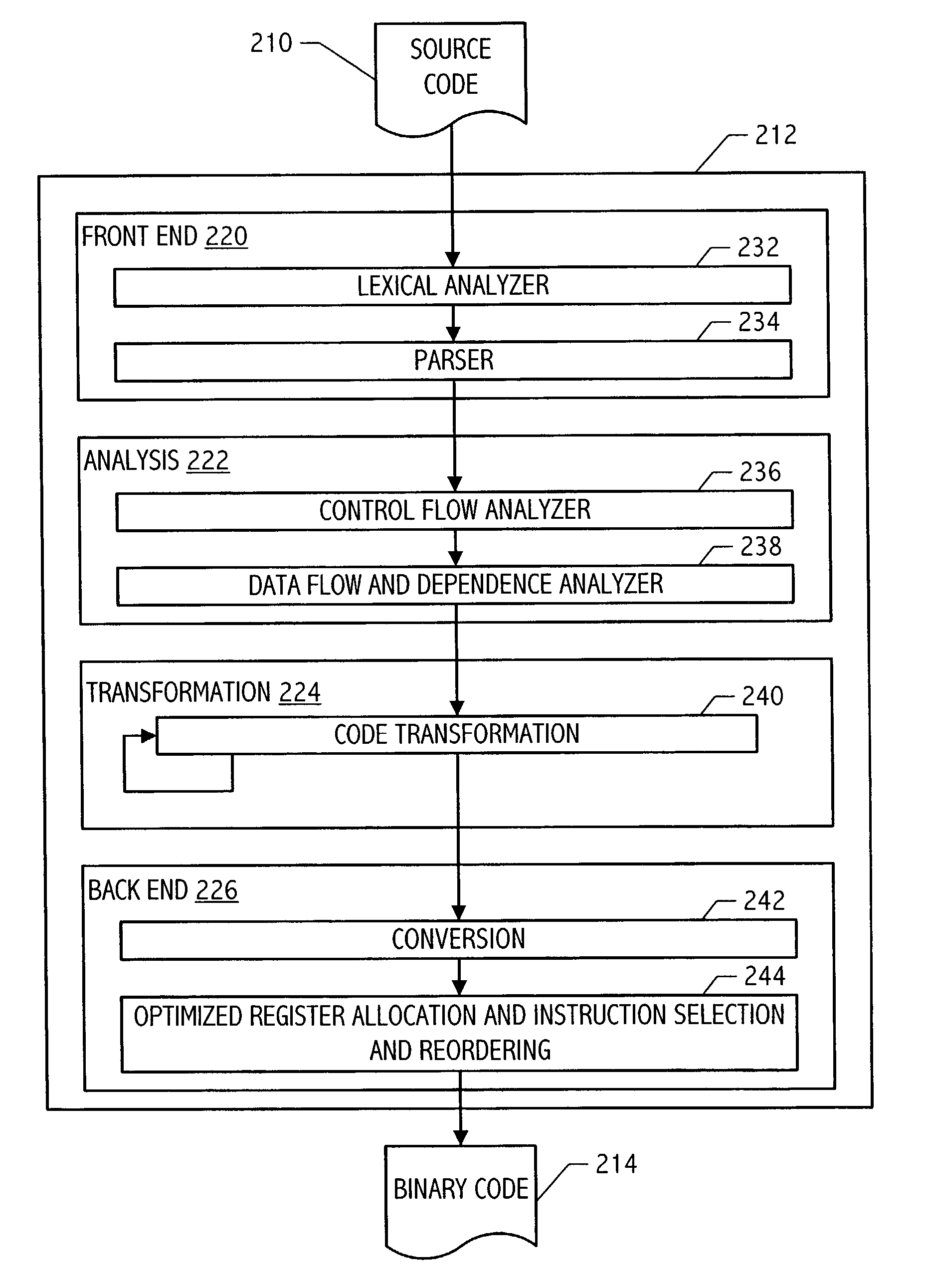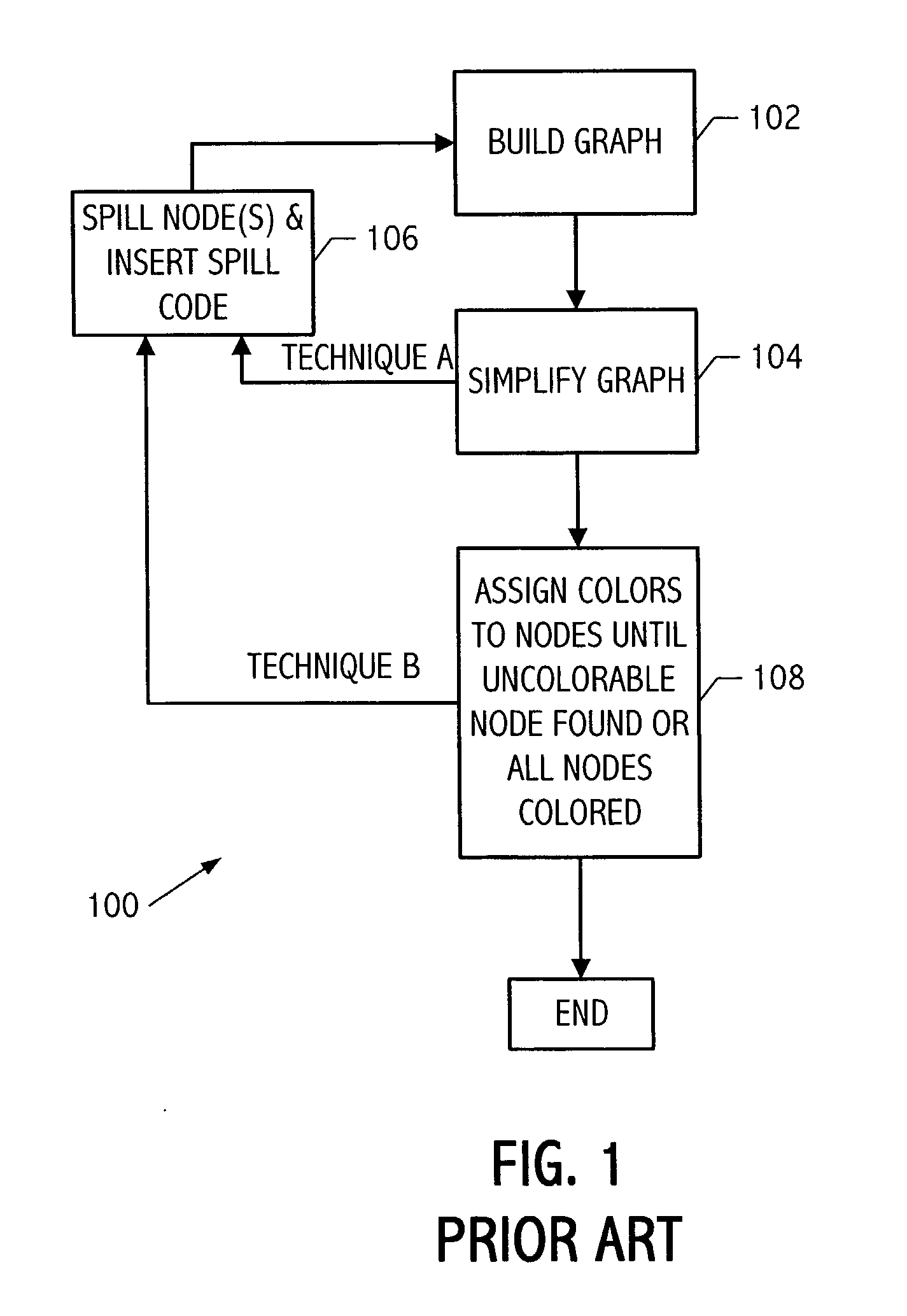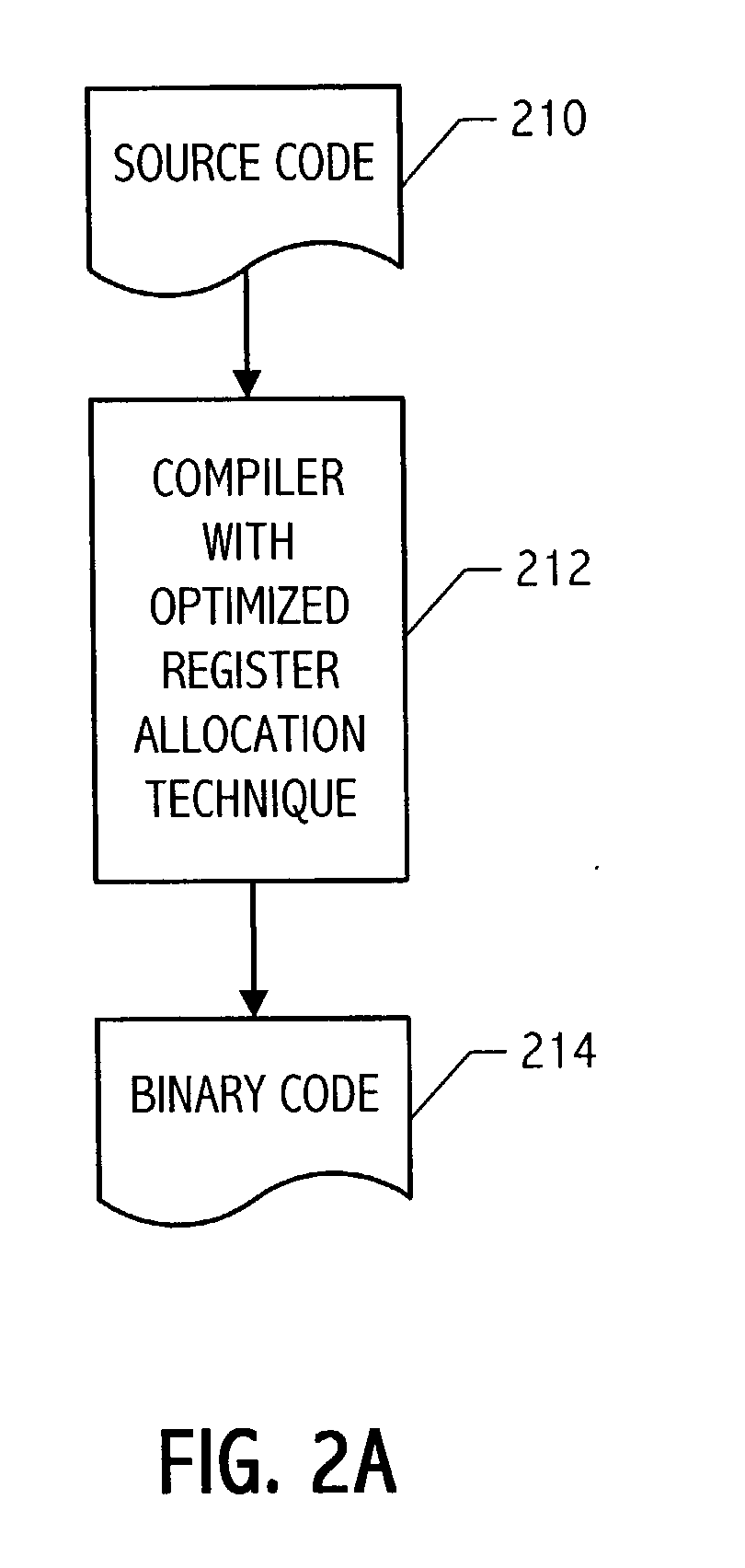Optimal register allocation in compilers
a register allocation and compiler technology, applied in computing, instruments, electric digital data processing, etc., can solve the problems of inability to solve the np-complete class in time, undesirable storage of variables in these alternative locations, and the polynomial-time bounded solution to an np-complete problem has not yet been found
- Summary
- Abstract
- Description
- Claims
- Application Information
AI Technical Summary
Problems solved by technology
Method used
Image
Examples
Embodiment Construction
)
[0025] An improved register allocation technique is provided. Previous register allocation techniques were focused on which nodes to spill and improving graph coloring routines. Each of these techniques was constrained in the available processing power and time available to allocate registers. The availability of additional processing power provides different alternatives for improving register allocation. According to the present invention, the interference graph coloring is attempted multiple times prior to spilling one or more nodes. Each node has a spill cost derived from the time it takes to store and recall the variable's data combined with how often the compiler thinks the variable is needed. Similarly, each coloring failure has a spill cost which is the accumulation of the spill costs of the remaining un-colorable nodes. If any solutions are found, the process is complete. If only failures are found, the cheapest node(s) to spill is evaluated based on the multiple failures....
PUM
 Login to View More
Login to View More Abstract
Description
Claims
Application Information
 Login to View More
Login to View More - R&D
- Intellectual Property
- Life Sciences
- Materials
- Tech Scout
- Unparalleled Data Quality
- Higher Quality Content
- 60% Fewer Hallucinations
Browse by: Latest US Patents, China's latest patents, Technical Efficacy Thesaurus, Application Domain, Technology Topic, Popular Technical Reports.
© 2025 PatSnap. All rights reserved.Legal|Privacy policy|Modern Slavery Act Transparency Statement|Sitemap|About US| Contact US: help@patsnap.com



